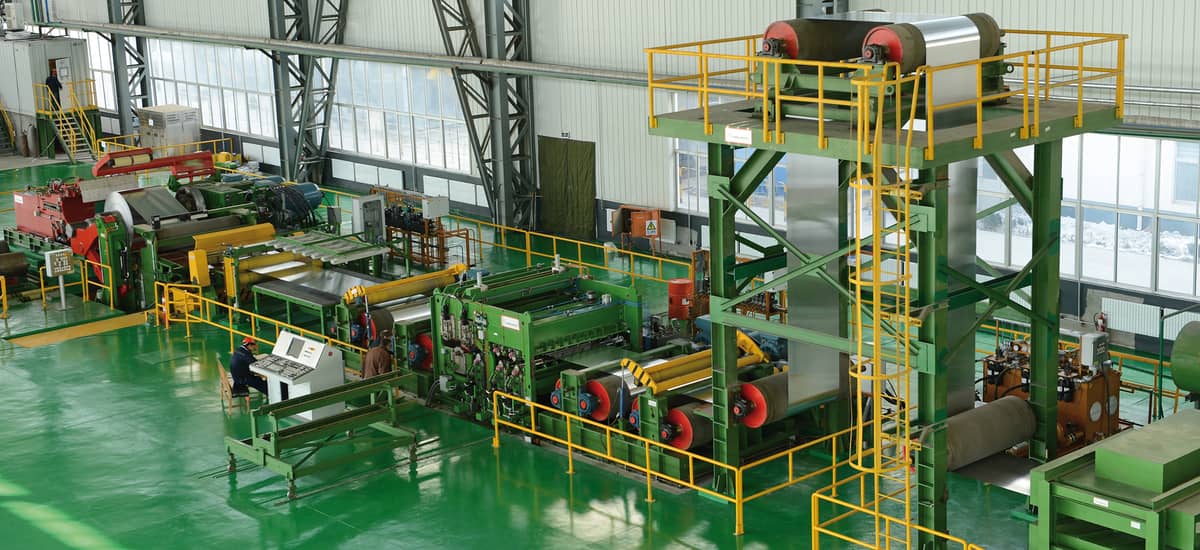ALUMINIUM AND NON-FERROUS METALS
Aluminium Tension leveling lines
In the 1950s the metal processing industry recognized the need for a faster and less expensive method to achieve extreme flatness in aluminium and steel sheet production. Hunter responded to the challenge in 1958 by building the industry’s first tension leveling line for 36” wide coiled material. Danieli, as it has done for almost 60 years, is still meeting the challenge with state-of-the-art leveling systems for flat rolled aluminium products. The industry goals of high quality,
lower investment and increased productivity can all be achieved with Danieli’s tension leveling lines.
In the tension leveling process, the strip is leveled by locally bringing the material beyond the yield point using a combination of a tension generated by bridle rolls and a tension obtained by alternately bending the strip over small diameter rolls. This action causes permanent elongation of the longitudinal fibers, which makes their length evenly distributed across the width, thereby eliminating those internal stresses which originate flatness defects.
Using the bending action in addition to the pure tension generated by the bridles has two advantages:
- A reduction in bridle motors power, because the tension generated by the motors is locally amplified by the bending action,
- An easier control of the process, because a strip subjected to a pure tension is more likely to break.
Danieli's design and manufacturing experience and continuing technological development allow customizing each system for each client’s specific requirements.


